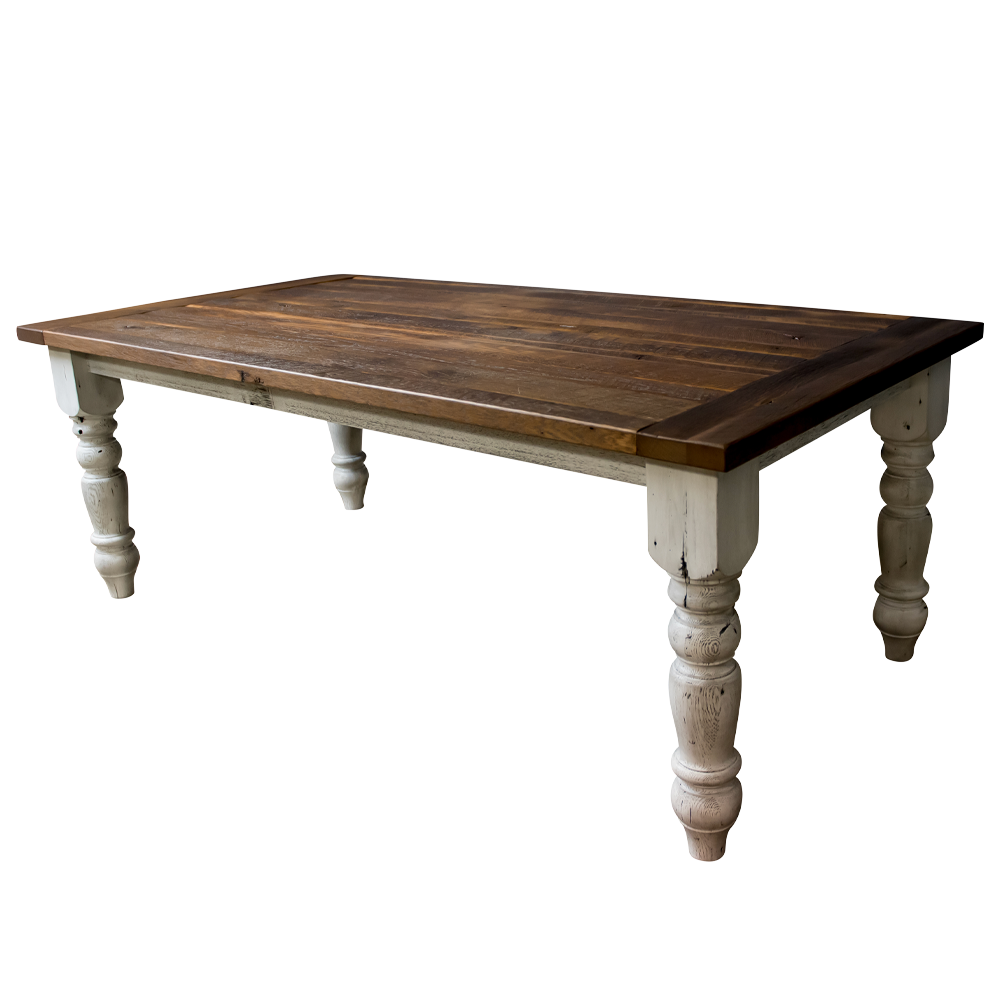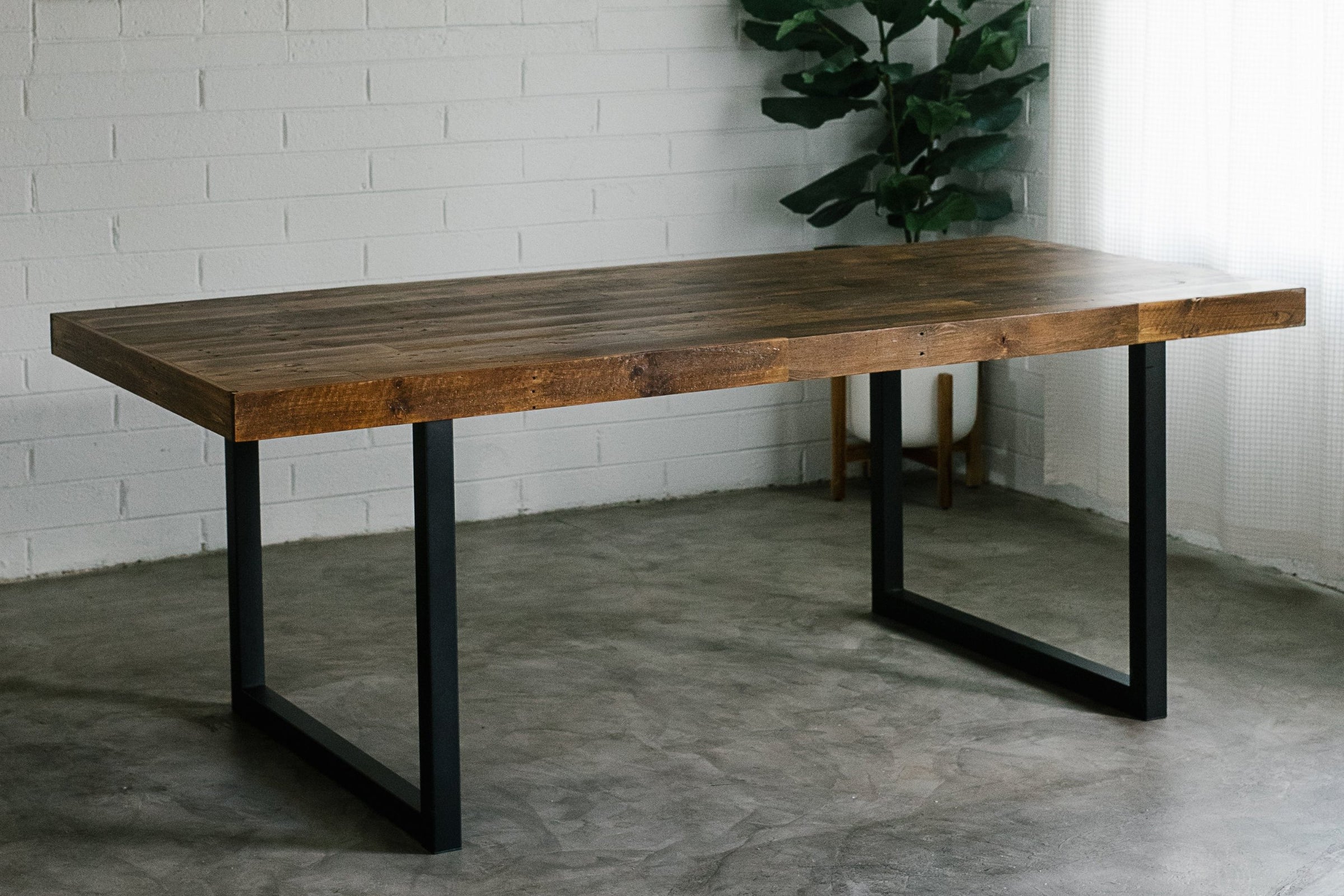Discovering the Different Kinds Of Dining Table Legs Wood for Your Eating Area
The option of dining table legs timber can greatly affect both the aesthetic and useful qualities of your dining area. Strong wood options, such as oak and walnut, give a traditional look with unmatched resilience, while crafted wood options offer innovative designs that mimic the splendor of all-natural grains. Additionally, the expanding trend of redeemed wood introduces a lasting element that allures to environmentally mindful customers. As we check out these different choices, it ends up being vital to take into consideration not only the visual charm yet also the functional implications of each material option. What factors should lead your choice?
Solid Wood Options

In addition, solid wood is renowned for its toughness and long life. Unlike engineered products, solid wood is less susceptible to bending and damage over time when correctly kept. This makes it an optimal selection for families or those who often organize celebrations. Each item of strong timber is unique, showcasing individual attributes that include in the charm and character of the table.
Furthermore, strong wood can be completed in various ways, varying from all-natural oils to stained coatings, permitting house owners to customize their furnishings to match their decor. In recap, choosing solid timber for dining table legs not only guarantees structural stability however also enhances the aesthetic charm of the dining location, making it a beneficial investment for any home.
Engineered Timber Alternatives

Plywood, created from numerous layers of timber veneer, is especially solid and steady, making it an excellent selection for eating table legs. Its layered make-up enables it to hold up against adjustments in humidity and temperature level much better than standard strong wood. MDF, on the various other hand, uses a smooth surface area for painting or veneering, enabling developers to accomplish a sleek appearance while keeping structural stability.
When selecting engineered wood alternatives, it is vital to take into consideration the desired usage and desired aesthetic. These products not only improve the capability of eating spaces yet also allow for greater design flexibility, guaranteeing that modern and standard designs can exist together harmoniously.
Reclaimed Wood Features
Reclaimed wood uses a distinct mix of sustainability and character, making it an increasingly popular selection for eating table legs. Sourced from old barns, manufacturing facilities, and other structures, reclaimed wood embodies a background that new products merely can not reproduce. Each piece brings its very own tale, noted by distinctive flaws, knots, and differing grain patterns, which add to a table's distinct aesthetic allure.
In enhancement to its visual charm, redeemed timber is an eco-friendly option. By repurposing previously made use of products, it find reduces the demand for brand-new lumber, therefore helping to minimize and preserve woodlands waste. This aligns with an expanding customer preference for lasting methods in home furnishings.
Furthermore, redeemed timber is usually much more sturdy than freshly gathered wood as a result of its age. The natural drying out process that redeemed wood undergoes lead to a denser and stronger product, making it less at risk to warping and splitting. This boosts the longevity of eating tables, permitting them to stand up to the roughness of everyday usage.
Softwood vs. Hardwood
When picking table legs, comprehending the differences between softwood and wood is important for achieving both visual and functional goals. Softwoods, originated from coniferous Recommended Reading trees, such as yearn and cedar, are identified by their lighter weight and simplicity of manipulation. They normally exhibit an even more rustic look, making them appropriate for country-style or casual dining rooms. Softwoods are generally less durable than hardwoods, which can be a factor to consider for family members or those looking for long life in their furniture.
On the other hand, woods, sourced from deciduous trees like maple, oak, and cherry, are renowned for their thickness, toughness, and resilience. The intricate grain patterns and rich shades of woods provide a sophisticated and timeless charm, making them perfect for official dining settings. While woods have a tendency to be much more expensive and much heavier, their durability against deterioration usually validates the investment.
Inevitably, the selection in between softwood and hardwood for dining table legs ought to align with your design vision, use requirements, and budget plan, making sure that your dining space reflects your individual style while remaining functional over time.

Treatments and finishes
The visual appeal and long life of eating table legs can be significantly improved via different surfaces and treatments. These processes not only safeguard the wood from damage but also raise its look, permitting it to enhance varied interior styles.
One usual therapy is tarnishing, which permeates the wood and improves its natural grain while including shade. Spots offer a rich, stylish look, enabling property owners to match their furnishings with existing decoration. On the other hand, clear finishes such as polyurethane or varnish create a safety layer without changing the wood's initial color, making certain longevity versus damage.
In addition, all-natural oils, like tung or linseed oil, nourish the timber and use a subtle luster, all while being green. These oils enable Home Page the surface area to breathe, preventing moisture build-up and prospective bending.
For those seeking a rustic charm, weathered or distressed coatings can be related to create an aged look, adding character to the item. Inevitably, the option of therapies and finishes depends upon personal preference, wanted aesthetic appeals, and the specific wood kind, making it vital to consider these aspects when selecting table legs for your area.
Verdict
Finally, the choice of table leg materials substantially influences both the functional and aesthetic facets of a dining area. Strong woods, engineered alternatives, and redeemed alternatives each offer unique advantages, satisfying different preferences and needs. Understanding the differences between softwoods and hardwoods, in addition to appropriate surfaces and therapies, permits notified decision-making. Eventually, the option of timber kind should line up with desired design, sturdiness, and ecological considerations, enhancing the total dining experience.
The option of dining table legs wood can profoundly impact both the aesthetic and useful qualities of your dining room - Dining Table Legs Wood. Solid wood options, such as oak and walnut, provide a classic appearance with unequaled resilience, while engineered wood alternatives offer innovative styles that mimic the splendor of all-natural grains. Strong wood provides a timeless high quality that can boost the total style of a dining room. Each piece of strong timber is one-of-a-kind, showcasing specific features that add to the beauty and character of the eating table
Additionally, reclaimed timber is commonly a lot more resilient than newly gathered wood due to its age.